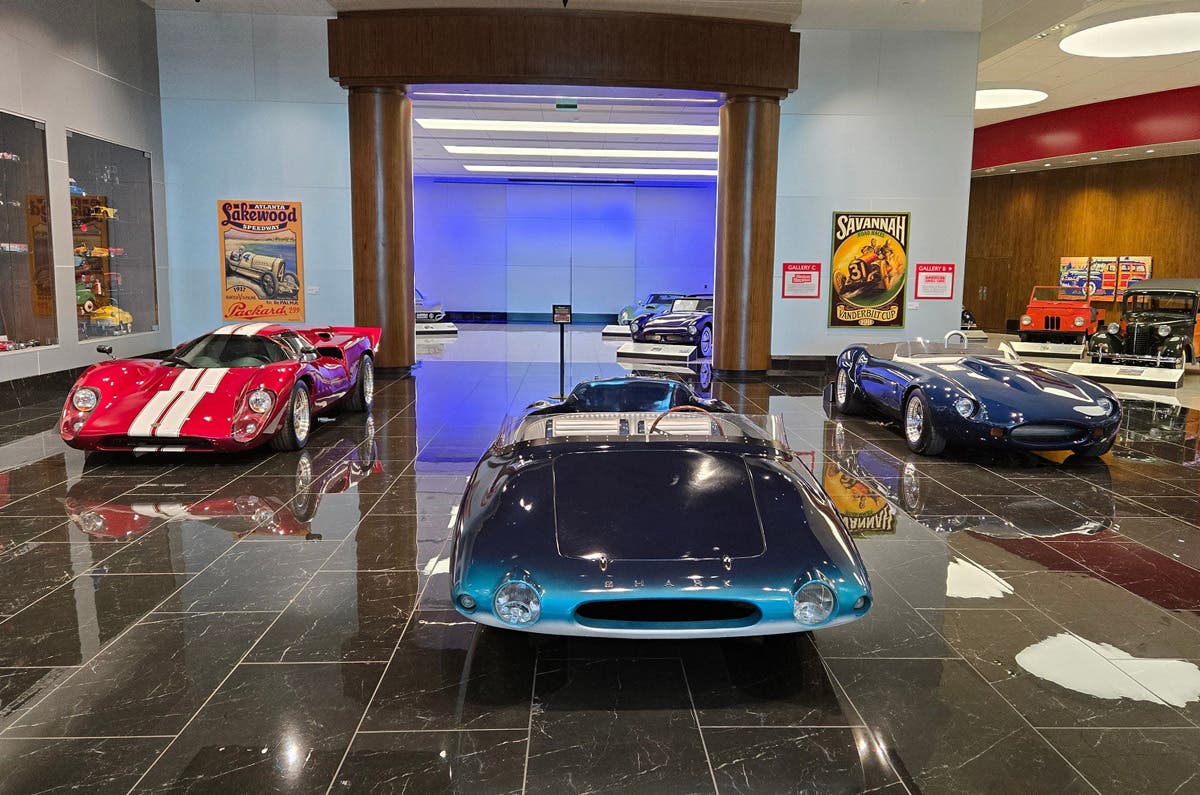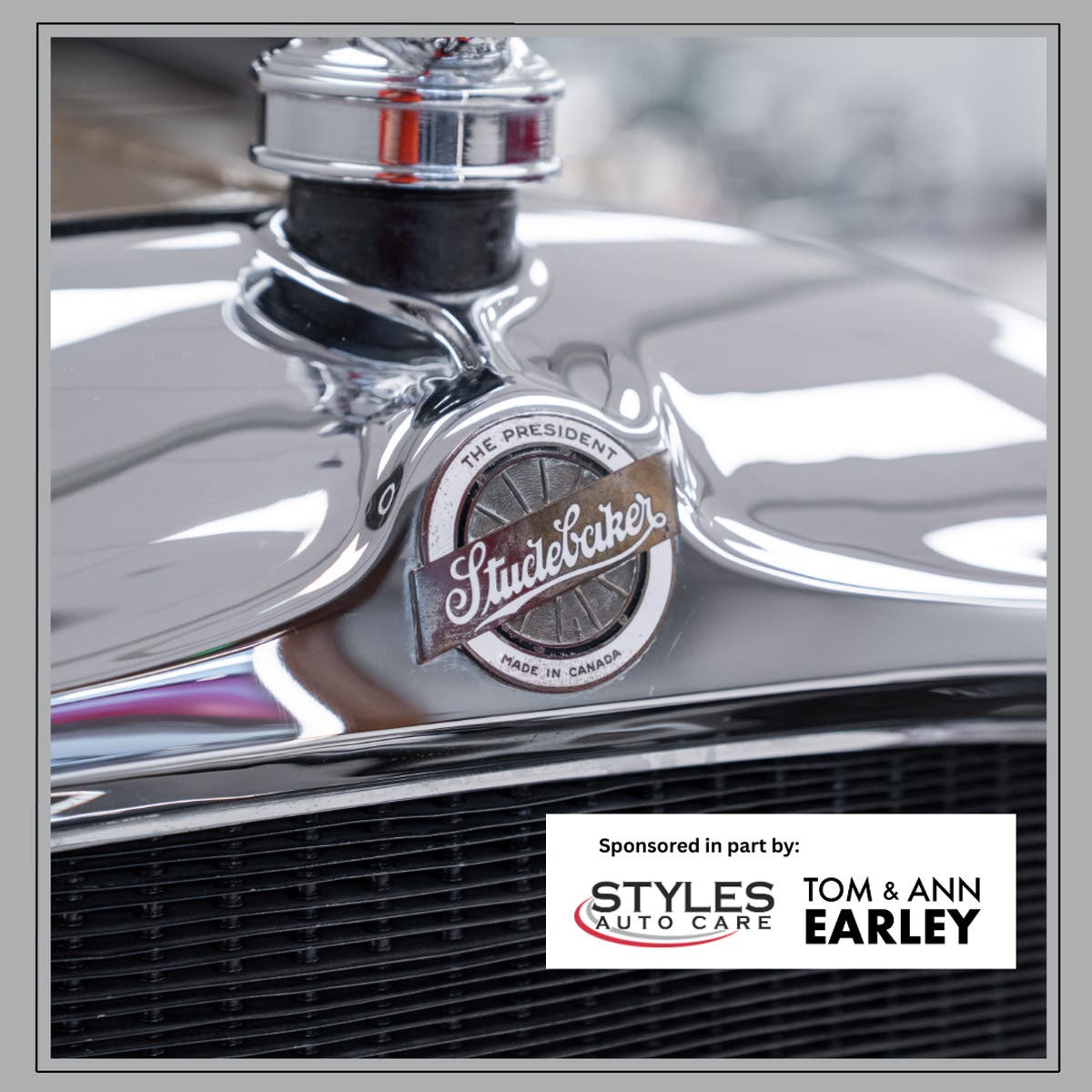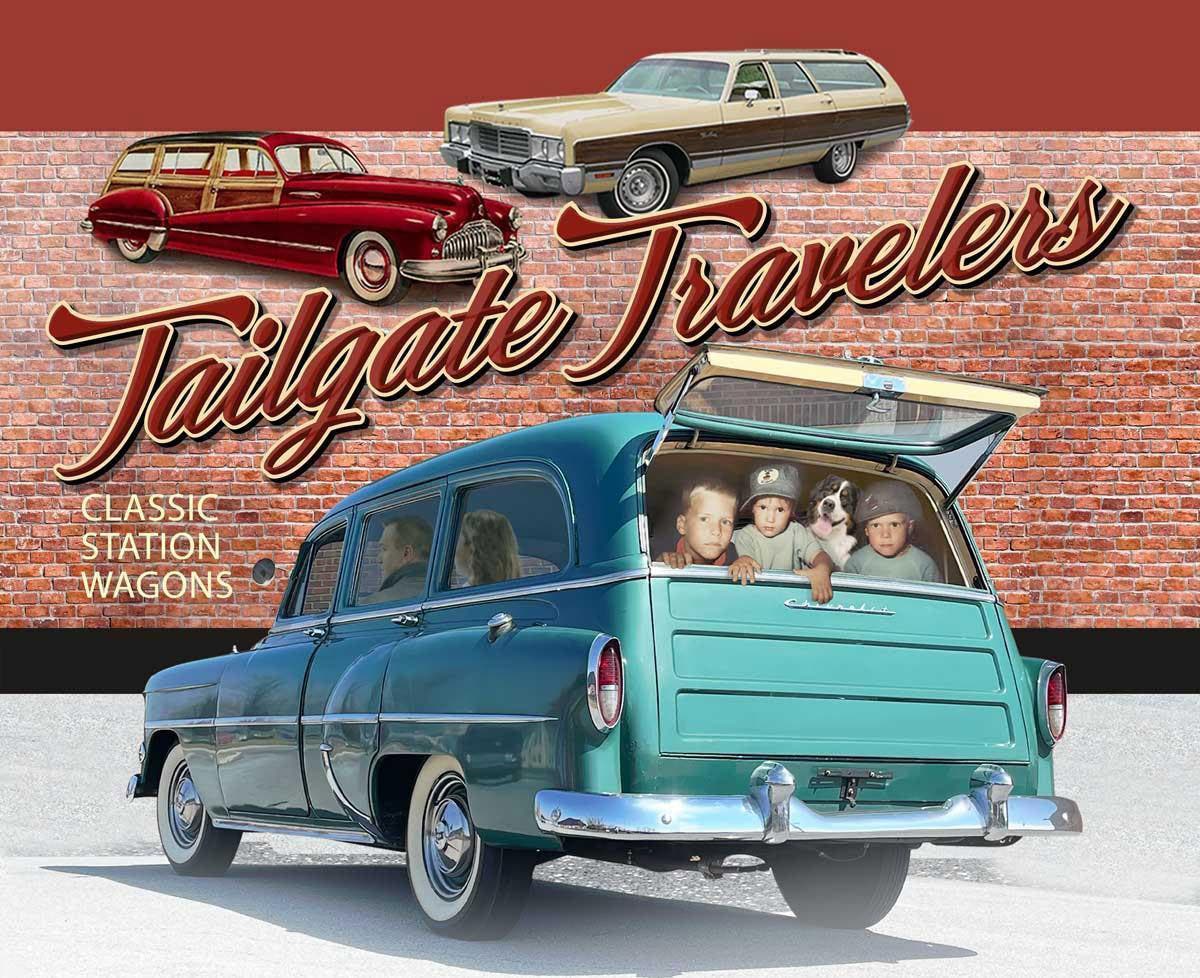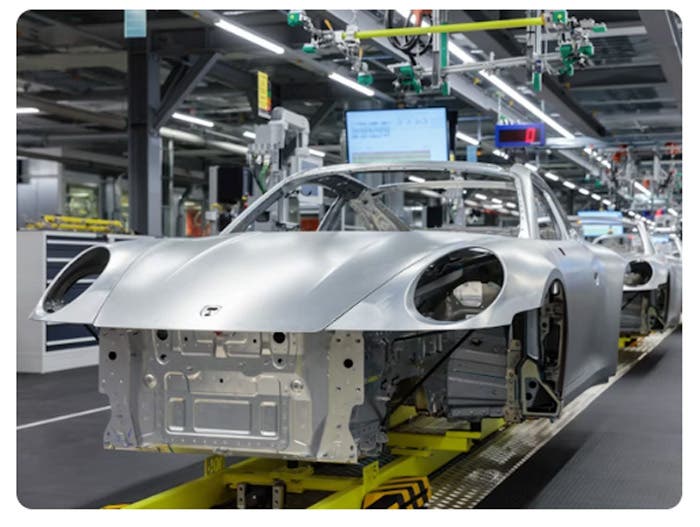Little Business, BIG CARS
Editor Input Needed
The business of building hearses and ambulances in North America has attracted a number of large, well-capitalized outfits that finished hundreds or even thousands of vehicles each year. But the trade has also seen its fair share of smaller firms that forged enviable reputations for hand-crafting coachwork to individual order the old-fashioned way.
From 1940 through the late 1950s, one of the most respected concerns of this sort could be found along Highway 2 on the west end of Ingersoll, Ontario. There, a Shell service station and body shop owned by John J.C. Little created an incredibly diverse array of one-off funeral cars and ambulances for customers from as far west as British Columbia. Should you ever stop in this charming rural community on the scenic route between Detroit and Buffalo, you will still find Little's shop standing at 181 Bell Street, though it's now used as a convenience store. (The traditional gas pump canopy seen in many "factory" photos disappeared around 1950.)
Mary Little poses with funeral director Russel Needham (1897-1985) as he takes delivery of his 1941 Cadillac carved-panel hearse outside her father's Shell station and body shop in Ingersoll, Ontario. Only four months were needed to build the car from a Series 61 "sedanette" like the one seen to the left.
"Do you know what we always said about him?" Mary Little recalled of her father during a 2002 interview at her nearby home, situated at 158 Bell Street. "He could make anything but money and fix anything but the clothesline."
Born in Kircudbrightshire, Scotland, in 1888, John James Collins Little honored his heritage by playing in a local pipe band for 42 years. He demonstrated a talent for woodwork after securing a position with the Mitchell Hearse Co. Ltd. in 1918. Originally incorporated as the O. J. Mitchell Co. in 1884, this renowned Ingersoll enterprise built everything from simply decorated casket wagons (used for "first calls" at the train station or the home of the deceased) to intricately carved and paneled hearses that rivaled the very best built elsewhere in Canada or the United States.
Though the always-conservative mortuary trade was one of the last to transition from the feed loft to the gasoline pump, Mitchell emerged as one of the few Canadian firms to make the adjustment successfully. John Little played a central role in Mitchell's accomplishment, serving as foreman for 18 of his 22 years with the company. In addition to Packard and Oldsmobile chassis, among other makes, Mitchell's exquisite coachwork found its way onto McLaughlin-Buicks built in nearby Oshawa, Ontario, and Pierce-Arrow chassis shipped across the border from Buffalo, N.Y. Cost-conscious customers, meanwhile, could always supply a high-grade secondhand passenger car for their commission.
John J. C. Little most likely constructed this 1950 Mercury Meteor flower car for a customer in Quebec, as the rooftop cross is a traditional detail on the province's funeral vehicles.
Mary Little recalled, however, that her father had a harder time at work after O.J. Mitchell died in the 1930s and "new people took it over.
"One was the son of a minister and a college graduate," Little said. "When they signed a contract to build a coach, they [said], 'We're not going to put that on' ...it used to be that you could get exactly what you wanted, so my father went into business for himself in 1940. For him, the last straw was a car that was being built for a local funeral director. The boss wanted the tires taken off it and put on his car until the coach was delivered."
New passenger cars that could be turned into funeral coaches and civilian ambulances were in short supply in Canada as the war in Europe strained the resources of Great Britain and its Commonwealth. However, Little got a boost from the good relationships he had with former Mitchell customers. The first to step forward with an order was Russel Needham, the owner of well-regarded funeral homes in Chatham and London, Ontario. Needham supplied Little with a '41 Cadillac 6127 two-door "sedanette." The coupe formed the basis of a Gothic panel hearse with blue stained-glass windows, a lift-up rear door and a side-service casket table supplied by the Henney Co. of Freeport, Ill. In the long run, it would become Little's most-famous creation and, arguably, the most-admired funeral coach ever constructed in Canada.
Russel Needham's gothic, paneled hearse was not the only one-off pro-car that John J.C. Little created from a 1941 Cadillac. He also used a Series 62 Touring Sedan to build this ambulance for employees of the John Labatt Ltd. brewery.
Three months was the time John Little typically quoted his customers for completing a vehicle, Mary adds, "but that Cadillac took four months, because my father had a car accident on the way home from Toronto, and that slowed him down."
In 1953, this still-magnificent coach was sold to the Dodson & Habkirk Funeral Home of Essex, Ontario, which kept it in regular service for another 10 years. Following its retirement in 1963, the car spent two decades deteriorating in a succession of service station lots, salvage yards and open fields in Essex County, and was even described as being "scrapped" in a November 1972 "Canadian Funeral Service" article by Ontario professional car historian Walt McCall.
In 1985, its remains were rescued from a field outside Kingsville by Chatham, Ontario, funeral director Lloyd Needham, whose father had commissioned the car 44 years earlier. A full restoration, supervised by Stan Uher at RM Restorations in Chatham, commenced in September 1986. With the to-do list topped by a new frame, an astounding 85 percent of the vehicle had to be found or rebuilt before the project was finally completed in February 1988, but the effort earned the Best-of-Show Award at the Professional Car Society's 1993 International Meet in Chatham. And, when Uher founded Classic Coachworks in nearby Blenheim, Ontario, he finished the exterior of his shop to resemble the small Shell service station where John Little built his fabled one-offs.
In addition to the ambulances and funeral cars, John J.C. Little's impressive repertoire also included boats, travel trailers and this school bus built from a Canadian Mercury pickup.
With the family home situated just across the street and slightly closer to Ingersoll's town center than the Shell station, it was perhaps inevitable that Mary Little wound up selling gas and sewing draperies for her father's hearses around the time she turned 20 years old in 1940. With so many Mitchell Hearse customers coming to him, she recalled "he never went out after orders," but "the most he had in progress at once was usually two cars, with maybe a third in for repairs.
"The most men working for him at any one time might have been four people, with one maybe a painter, and another on welding or bodywork," she said. Most of their modifications, even the intricately carved panels for the hearse exteriors, were completed with hand tools, since "we didn't have a lathe until later on." If a car was cut in half for a wheelbase extension, Mary said, "It wasn't like a loaf of bread. He would cut the frame in one place and the body in another place. There were no jigs ' it was all done manually. After the halves were apart, I would walk between them to bring luck." Another one of Mary's jobs concerned metal hardware, like torches and landau irons, which were specially cast at a small foundry near Kitchener, Ontario.
"I had to go out with a template for the nameplates, the casket roller frames or the 'funeral coach' sign that went in the windshield. I would take it to Hahn Brass in New Hamburg, and they'd plate it."
Typically, a funeral director would discuss with Little what he had in mind, sign a contract and deliver the auto of his choice to the Bell Street shop. After that first 1941 Cadillac, Mary remembered that her "dad did quite a few for Needham, including a four-door Lincoln with a rear door stretch, but it was not as nice looking."
Inexpensive sedan deliveries and panel trucks from Ford and Chevrolet were commonly used for simple first-call car conversions, while larger ambulances and hearses were often based on factory-built seven-passenger sedans, since the chassis didn't have to be stretched.
"We also did some older ones, especially during the war," Little said. Canadian Pontiacs built in Oshawa, Ontario, proved particularly popular with customers after peace returned. "A lot of these went to small towns," Little said. "Today, they would just rent a hearse with a driver. One funeral home [we dealt with] also had a furniture business, so my father had to make the car so the back lifted off from the cab back so they could deliver furniture."
In addition to the funeral vehicles and ambulances he built through 1958 or thereabouts, when he was 70 years old, Little also constructed boats, a pair of house trailers respectively completed in the 1940s and the 1960s and the occasional school bus based on a Canadian Mercury or International Harvester pickup.
When Little died in 1971, his status as one of Canada's great coachbuilders was assured in spite of his operation's modest scale. This is no small achievement, given how many other firms built fine professional cars in Canada, including the Brantford, Ontario, subsidiary of the Illinois-based Henney Motor Co., which claimed to be the country's largest funeral car builder by 1940; the Studebaker Funeral Car Corp., situated in Walkerville, Ontario, during the late 1920s and early 1930s; and the Welles Corp., a school bus maker that also completed some ambulance conversions at its Windsor, Ontario, plant in the late 1950s.
More recently, Canada's professional car prowess has been epitomized by Paul DeMers Conversions, which has been building hearses and ambulances in Beloeil, Quebec, since the 1960s and Toronto-based Eureka Coach, which built more than 600 vehicles annually at its peak during the mid 1980s.








